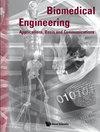基于熵特征的启发式支持向量机与神经网络热成像乳腺癌检测的比较研究
IF 0.6
Q4 ENGINEERING, BIOMEDICAL
Biomedical Engineering: Applications, Basis and Communications
Pub Date : 2023-03-02
DOI:10.4015/s1016237222500478
引用次数: 0
摘要
热成像是一种非接触式、非侵入性的成像技术,在医学专业中被广泛应用。由于癌症的早期识别至关重要,计算机辅助方法可以提高癌症患者的诊断率,治愈率和生存率。鉴于治疗费用高昂和患者人数众多,早期诊断是减少该病的健康和社会经济后果的重要步骤之一。乳房x光检查是目前检测乳腺癌最常用的方法。然而,由于较厚的乳房对比度较低,不建议年轻女性进行乳房x光检查,必须研究其他方法。这项工作计划开发两种性能良好的启发式专家系统的比较评估,用于检测热成像乳腺癌。热像图图像取自标准DMR数据集。然后,将给定的图像转入预处理阶段。在这里,输入的热像图图像是通过对比度增强和均值滤波来完成的。然后采用梯度向量流蛇(GVFS)模型进行乳房分割,并采用优化模糊[公式:见文本]均值聚类(OFCM)进行异常分割。从感兴趣的分割区域,获得基于熵的特征。在分类阶段,引入“启发式支持向量机”(HSVM)和“启发式神经网络”(HNN)对乳腺癌影响图像进行诊断。在支持向量机和神经网络的基础上,采用基于对向改进的束状虫群算法(OI-TSA)进行了扩展。此外,将建议的模型与传统的SVM和NN分类器以及其他分类器进行比较,以验证其竞争性能。结果表明,所设计的OI-TSA-HNN模型的准确率和精密度分别为96%和98.4%。因此,研究结果证实了所提供的方法在乳腺癌热成像检测中显示出有效性。本文章由计算机程序翻译,如有差异,请以英文原文为准。
COMPARATIVE STUDY OF HEURISTIC-BASED SUPPORT VECTOR MACHINE AND NEURAL NETWORK FOR THERMOGRAM BREAST CANCER DETECTION WITH ENTROPY FEATURES
Thermography is a noncontact, noninvasive imaging technology that is commonly utilized in the medical profession. As early identification of cancer is critical, the computer-assisted method can enhance the diagnosis rate, curing, and survival of cancer patients. Early diagnosis is one of the major essential steps in decreasing the health and socioeconomic consequences of this condition, given the high cost of therapy and the large prevalence of afflicted people. Mammography is currently the majorly utilized procedure for detecting breast cancer. Yet, owing to the low contrast that occurs from a thick breast, mammography is not advised for young women, and alternate methods must be investigated. This work plans to develop a comparative evaluation of two well-performing heuristic-based expert systems for detecting thermogram breast cancer. The thermogram images are taken from the standard DMR dataset. Then, the given images are transferred to the pre-processing stage. Here, the input thermogram images are accomplished by contrast enhancement and mean filtering. Then the Gradient Vector Flow Snakes (GVFS) model is adopted for breast segmentation, and Optimized Fuzzy [Formula: see text]-Means Clustering (OFCM) is developed for abnormality segmentation. From the segmented region of interest, the entropy-based features are acquired. In the classification phase, the “Heuristic-based Support Vector Machine” (HSVM) and “Heuristic-based Neural Network” (HNN) are introduced, which diagnose the breast cancer-affected images. The modifications on SVM and NN are extended by the Oppositional Improvement-based Tunicate Swarm Algorithm (OI-TSA). Furthermore, the suggested models are compared to the traditional SVM and NN classifiers, as well as other classifiers, to validate their competitive performance. From the results, the better accuracy and precision of the designed OI-TSA–HNN model are found to be 96% and 98.4%, respectively. Therefore, the findings confirm that the offered approach shows effectiveness in thermogram breast cancer detection.
求助全文
通过发布文献求助,成功后即可免费获取论文全文。
去求助
来源期刊

Biomedical Engineering: Applications, Basis and Communications
Biochemistry, Genetics and Molecular Biology-Biophysics
CiteScore
1.50
自引率
11.10%
发文量
36
审稿时长
4 months
期刊介绍:
Biomedical Engineering: Applications, Basis and Communications is an international, interdisciplinary journal aiming at publishing up-to-date contributions on original clinical and basic research in the biomedical engineering. Research of biomedical engineering has grown tremendously in the past few decades. Meanwhile, several outstanding journals in the field have emerged, with different emphases and objectives. We hope this journal will serve as a new forum for both scientists and clinicians to share their ideas and the results of their studies.
Biomedical Engineering: Applications, Basis and Communications explores all facets of biomedical engineering, with emphasis on both the clinical and scientific aspects of the study. It covers the fields of bioelectronics, biomaterials, biomechanics, bioinformatics, nano-biological sciences and clinical engineering. The journal fulfils this aim by publishing regular research / clinical articles, short communications, technical notes and review papers. Papers from both basic research and clinical investigations will be considered.
 求助内容:
求助内容: 应助结果提醒方式:
应助结果提醒方式:


